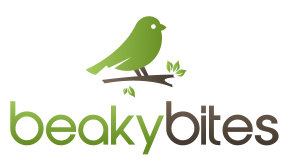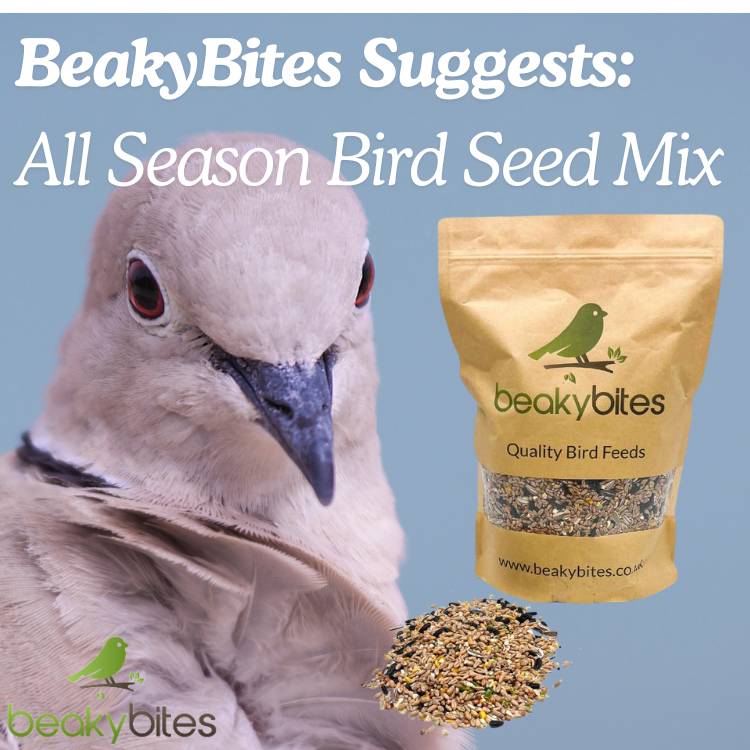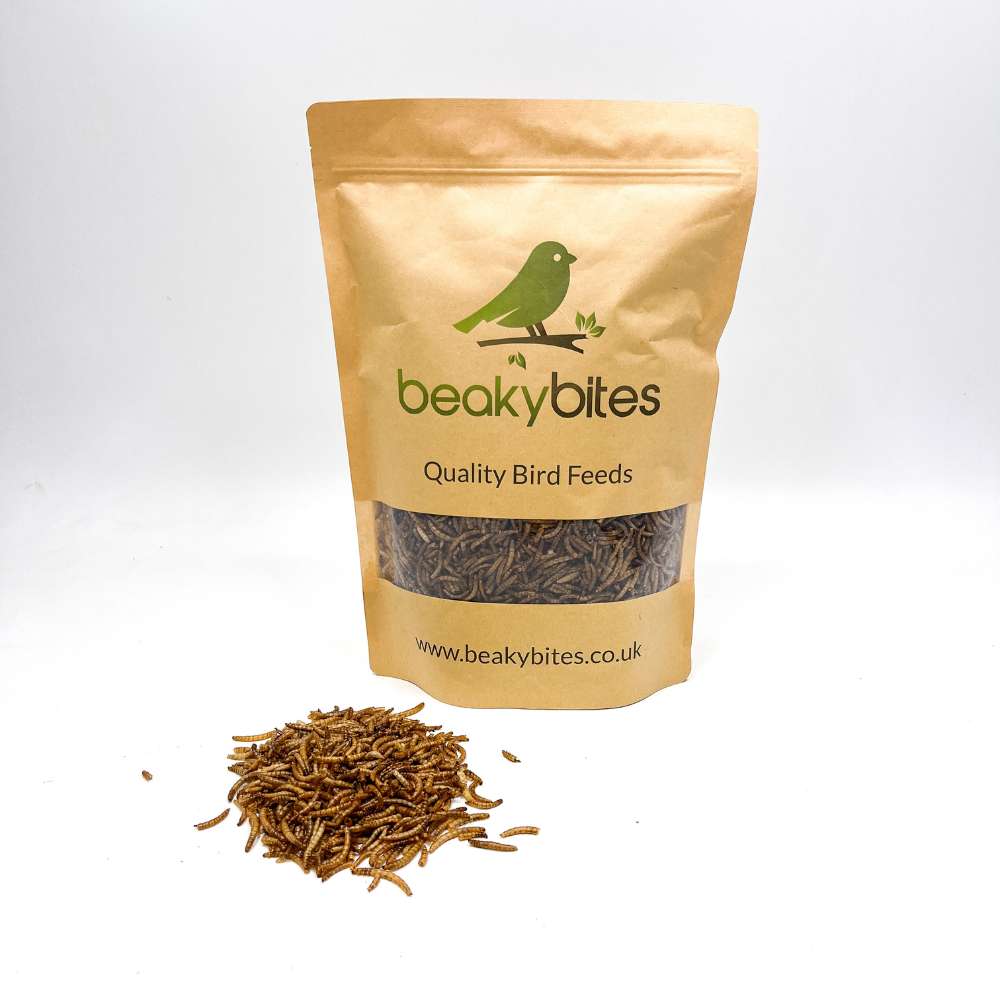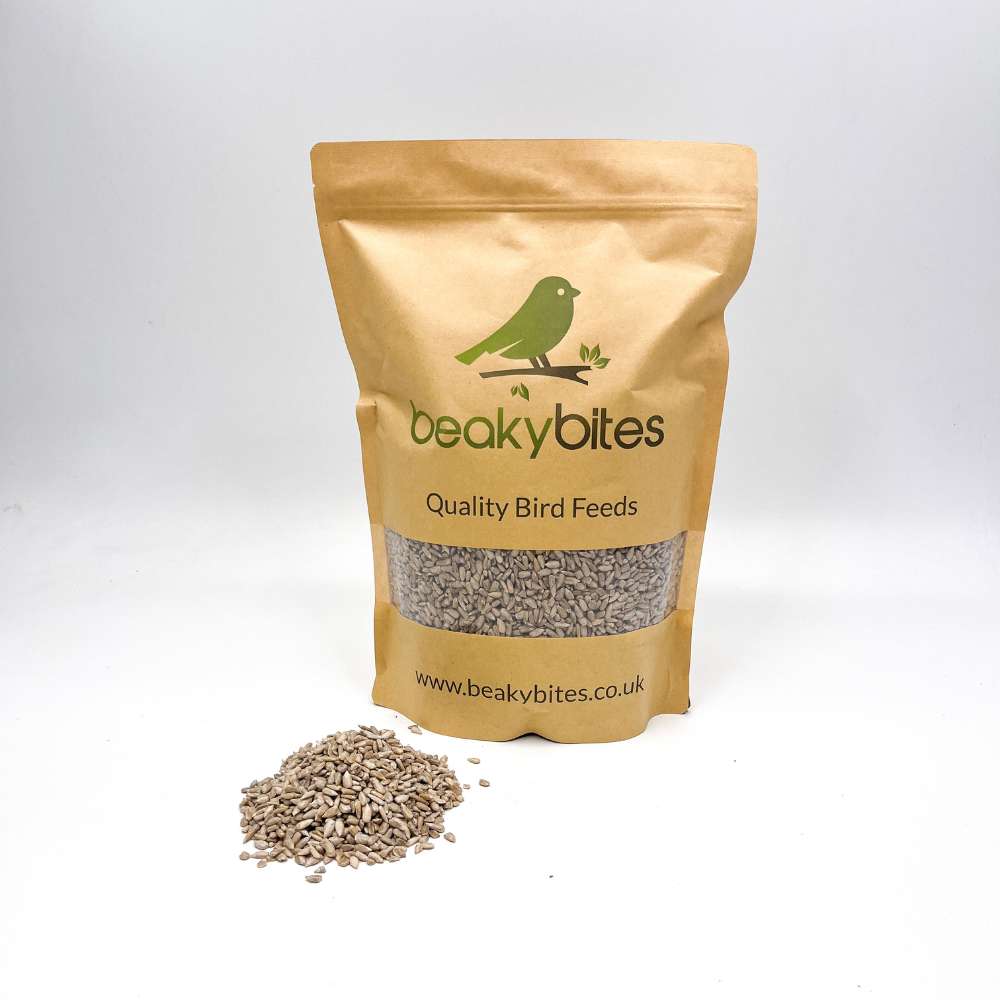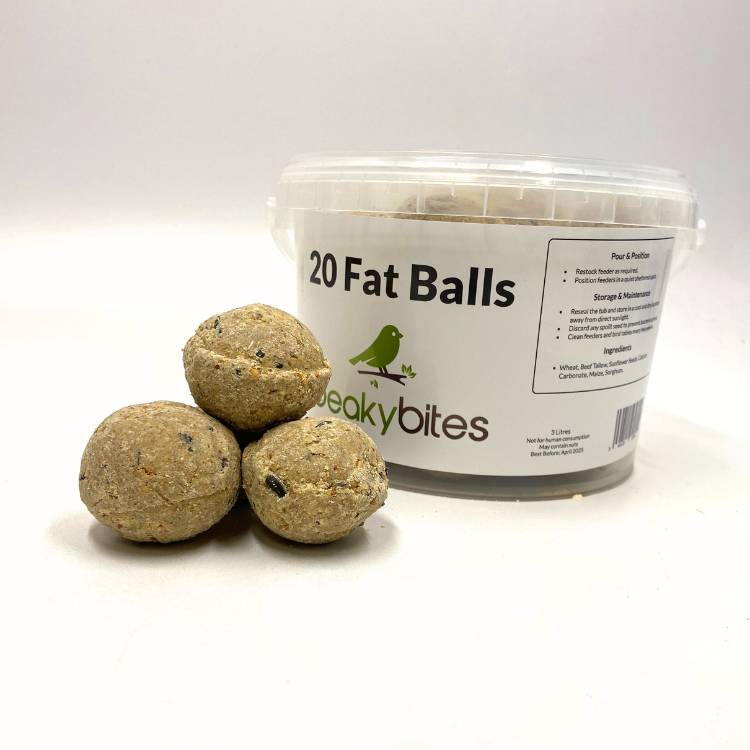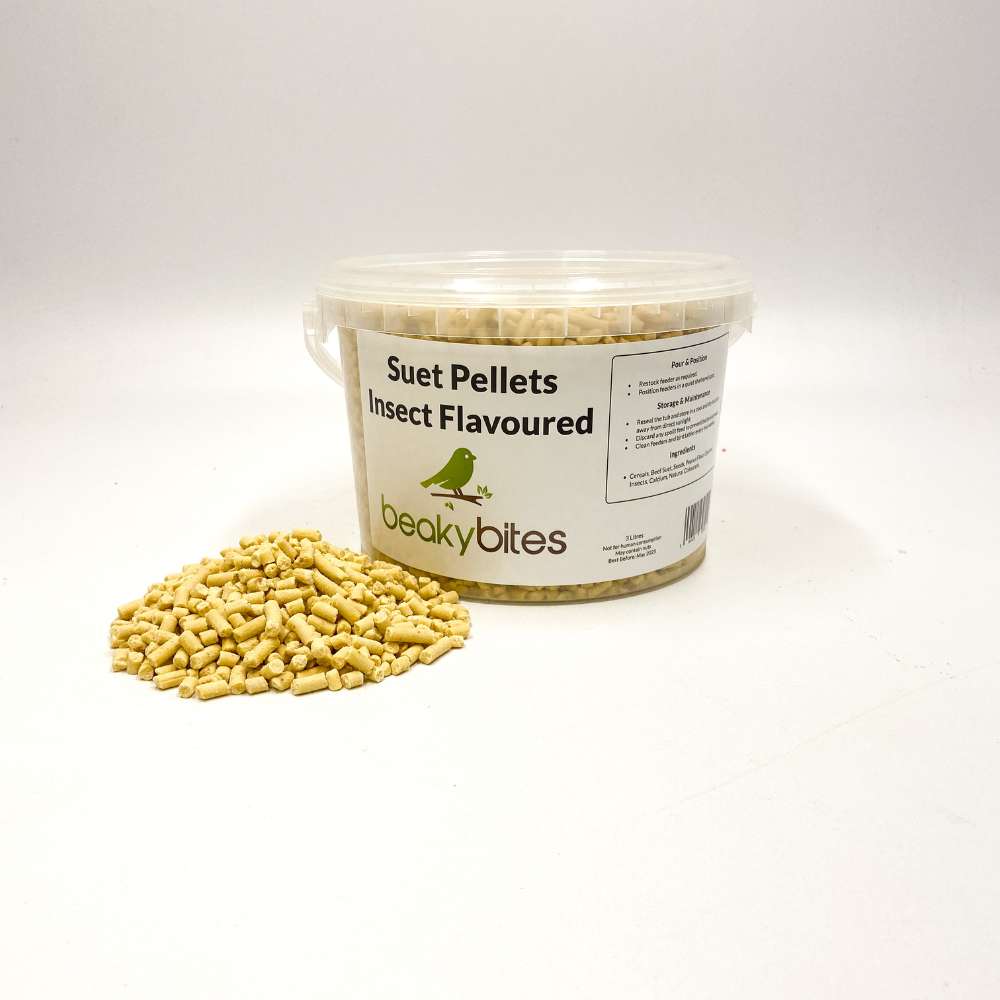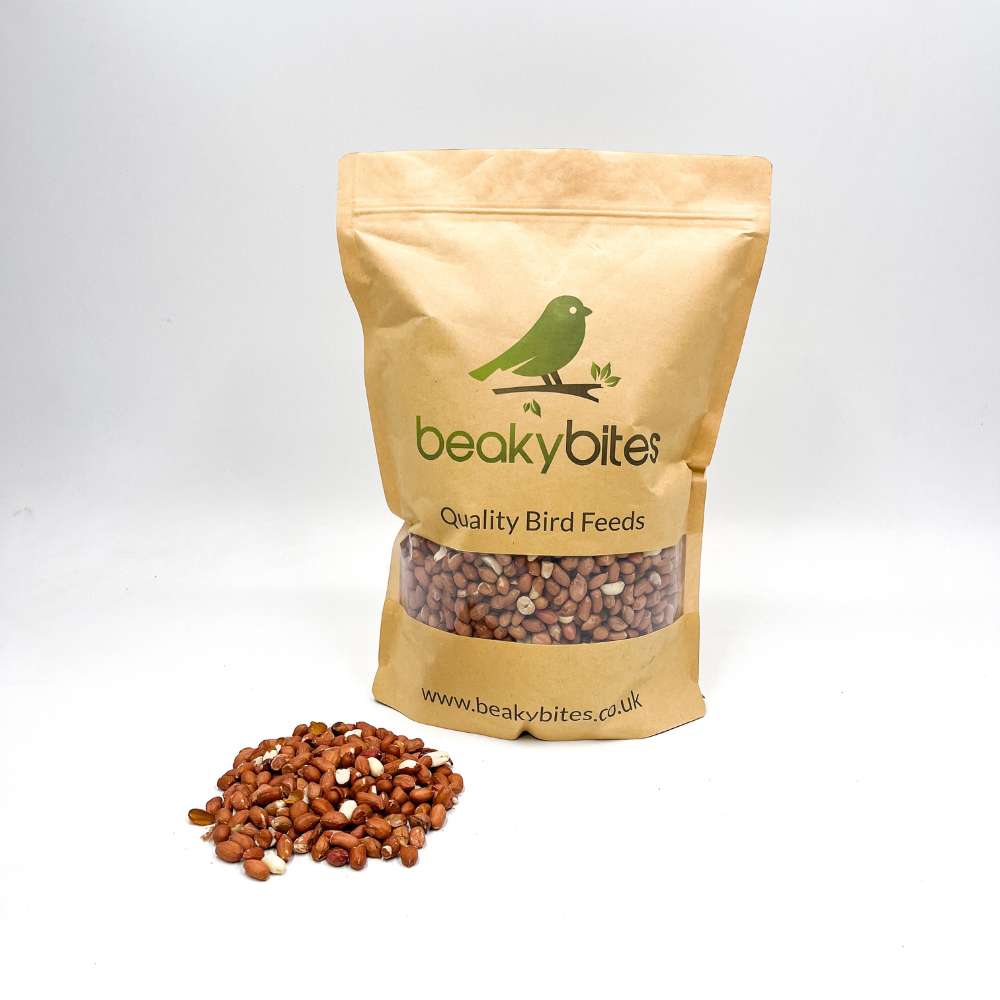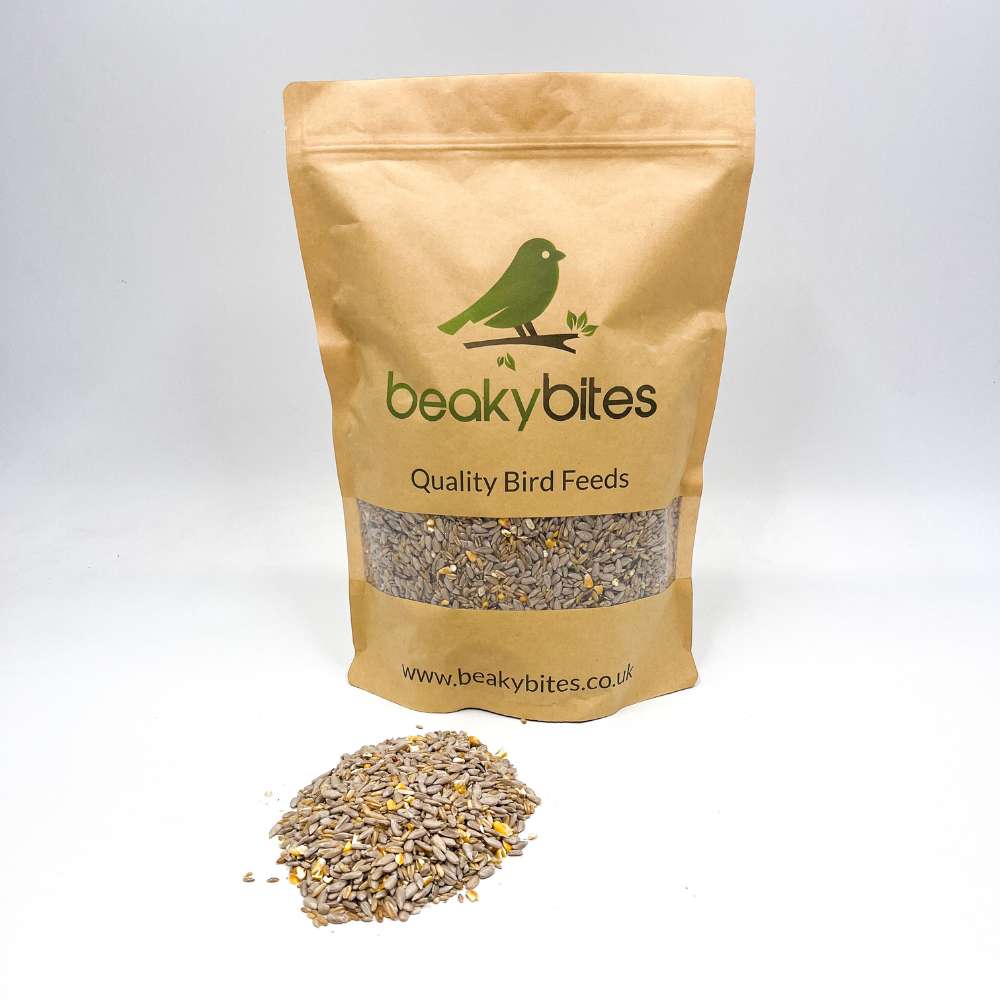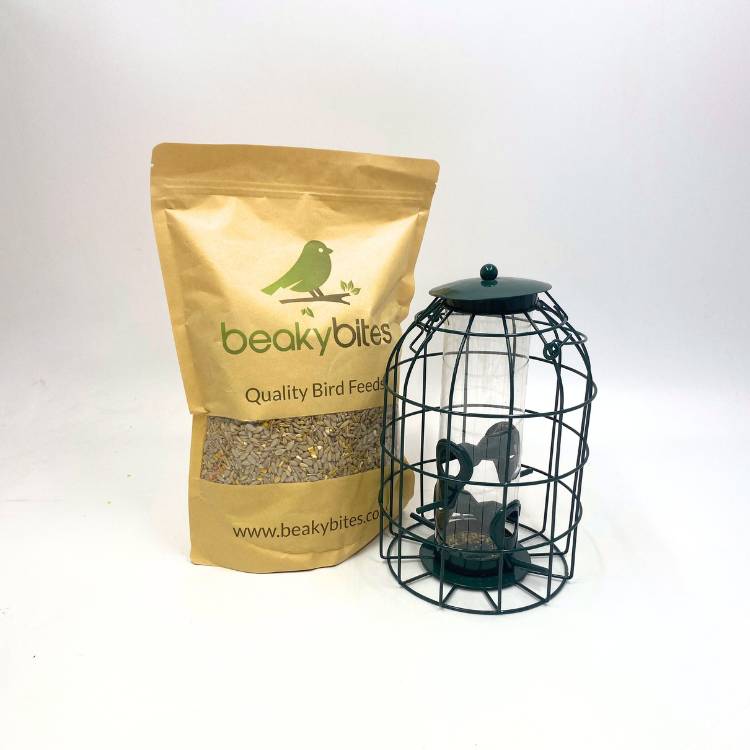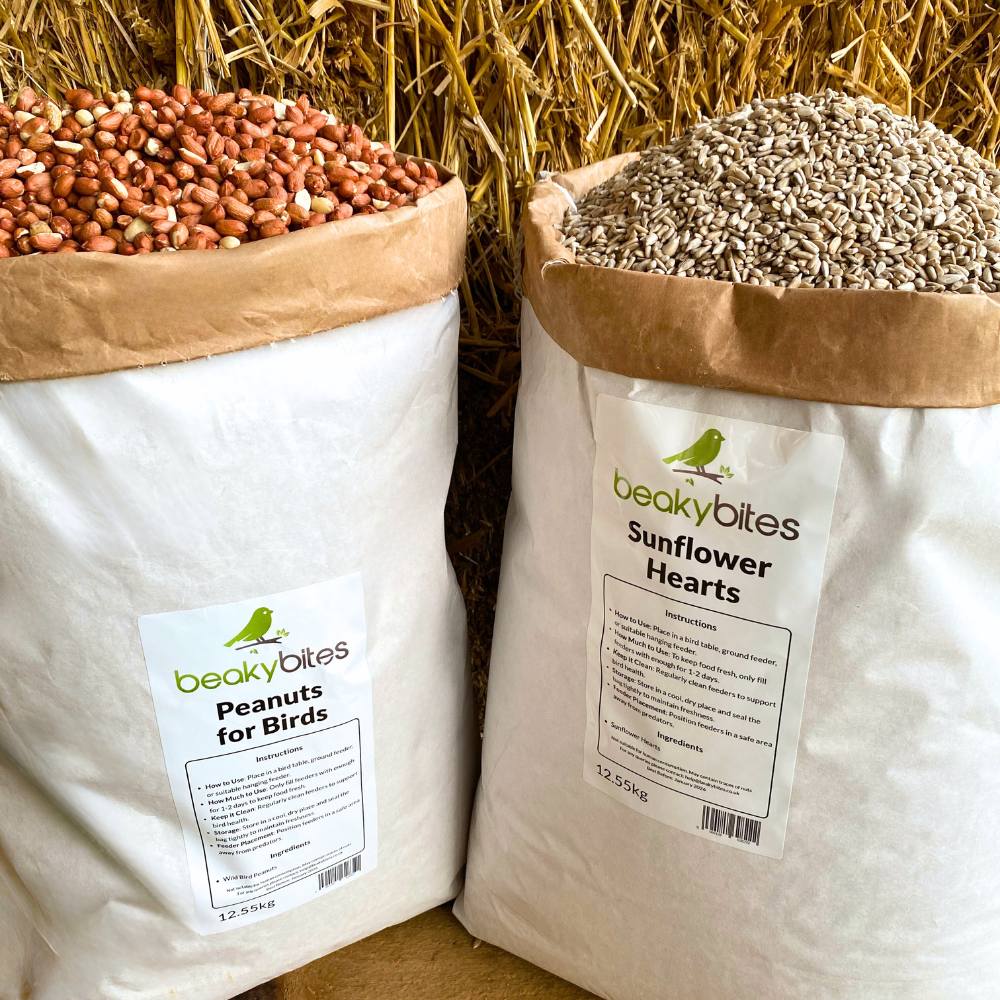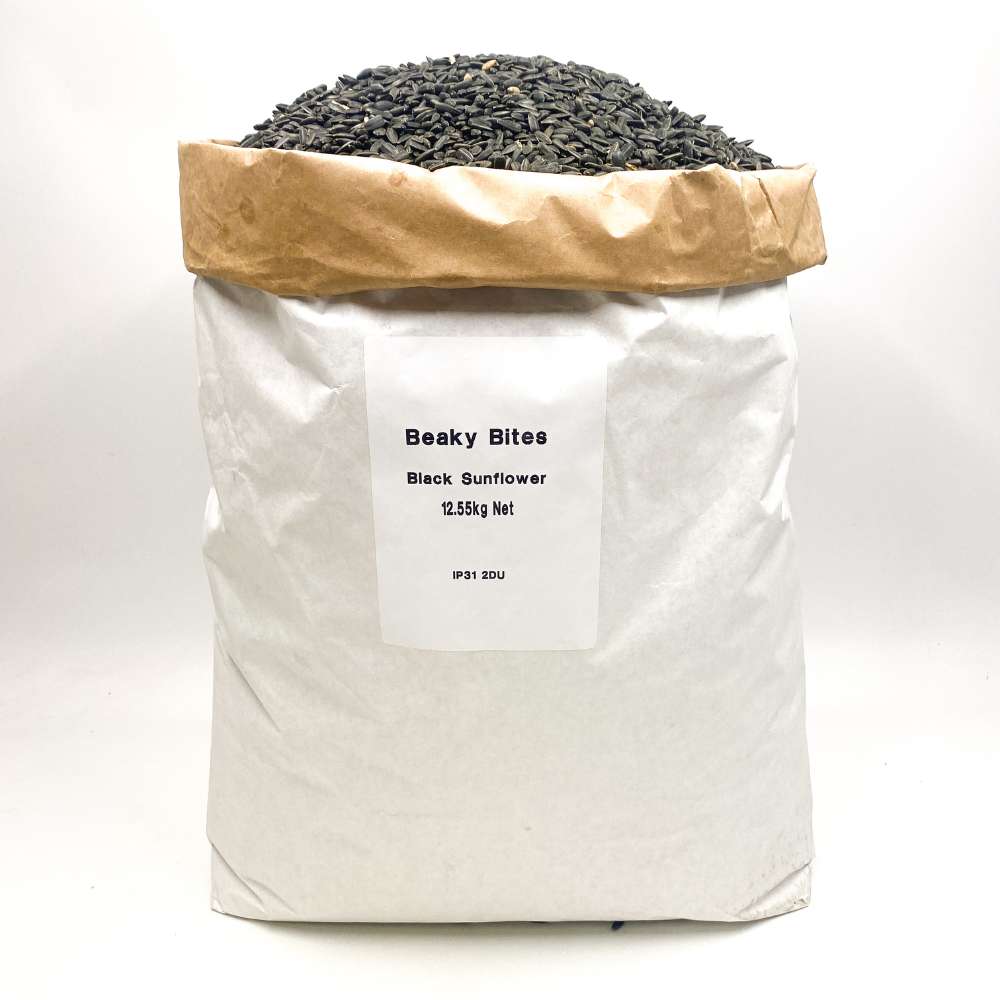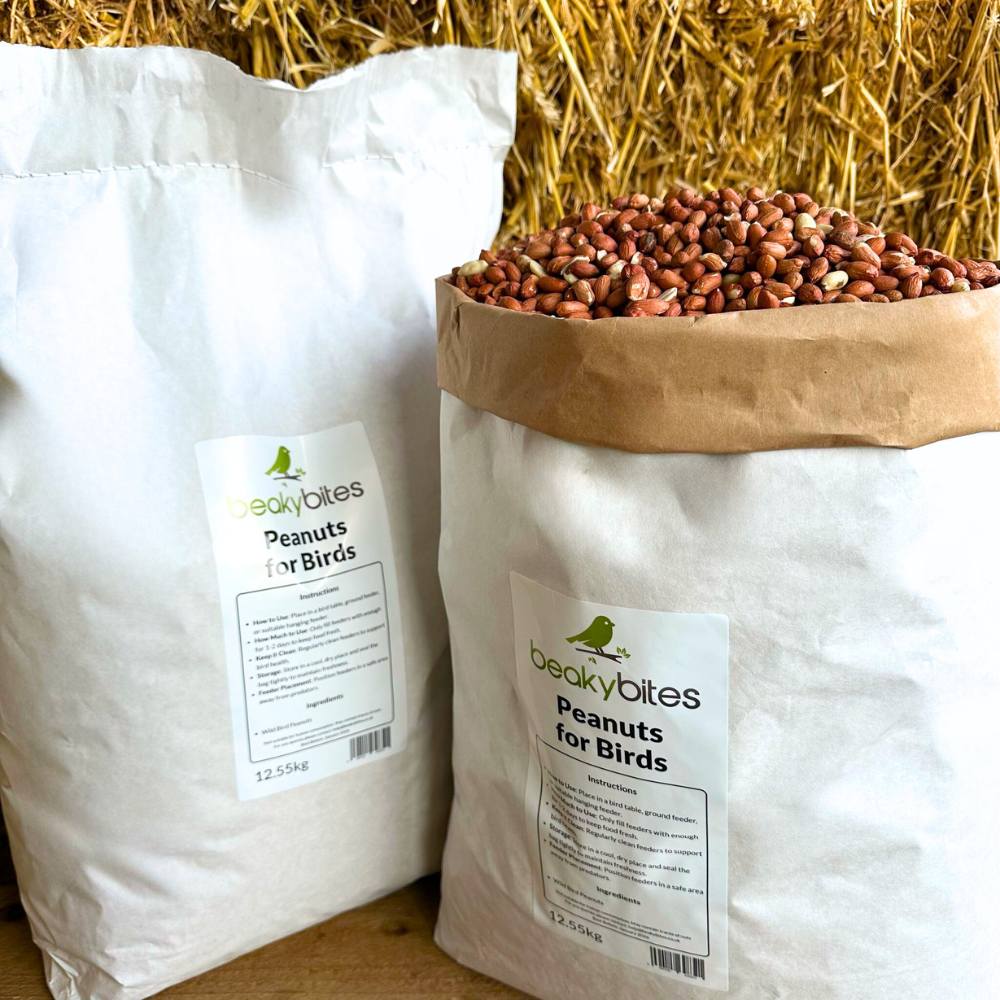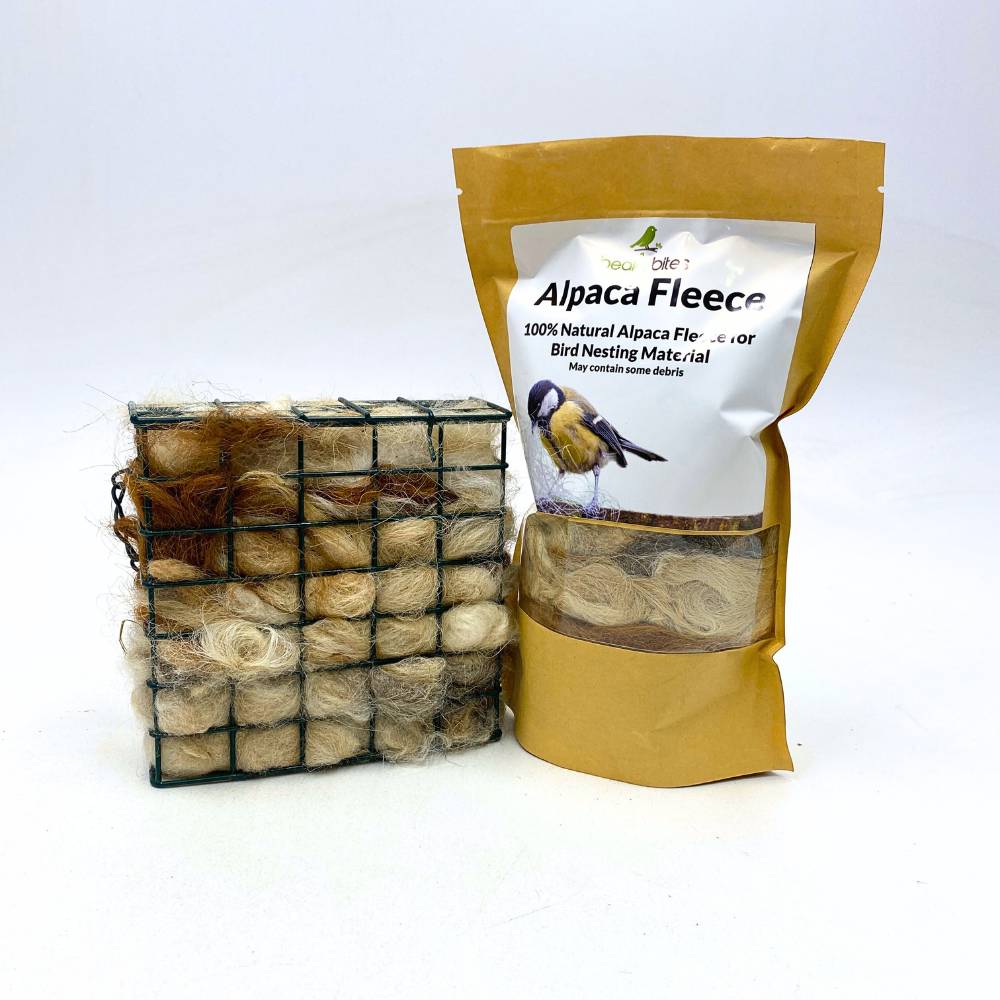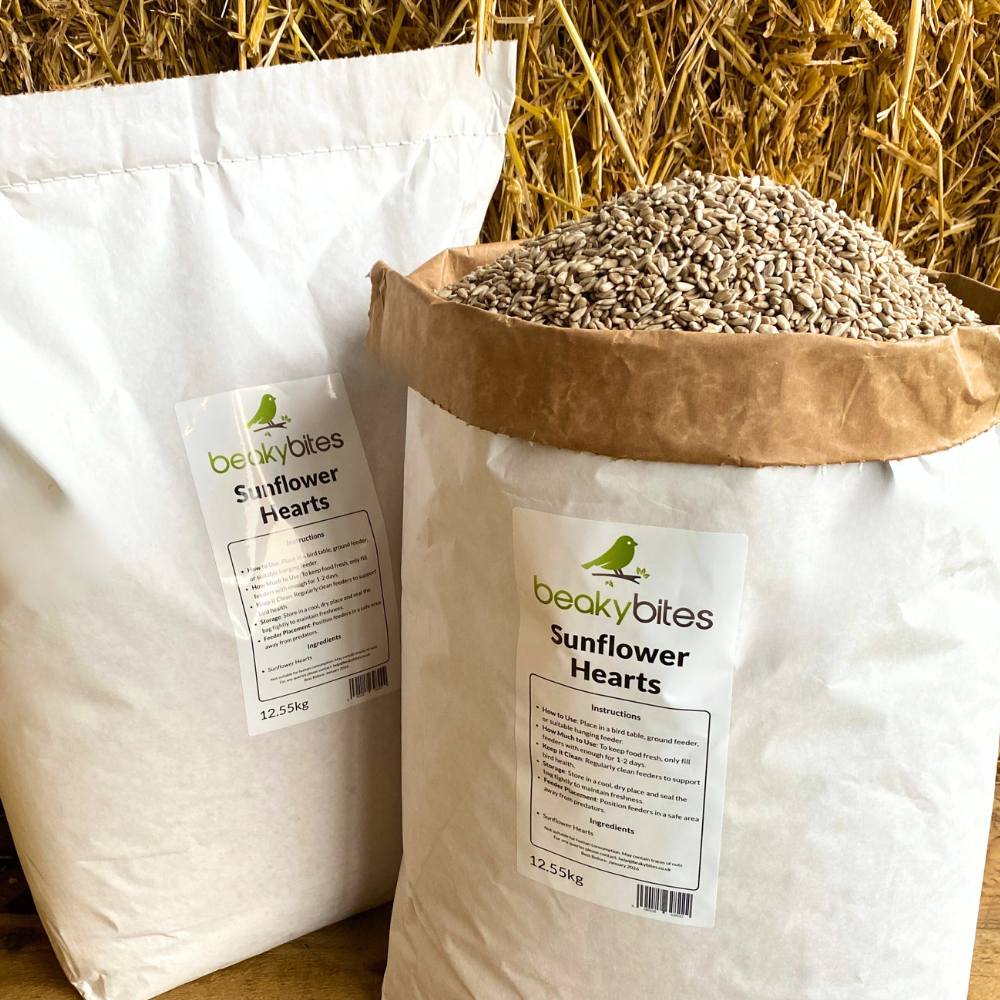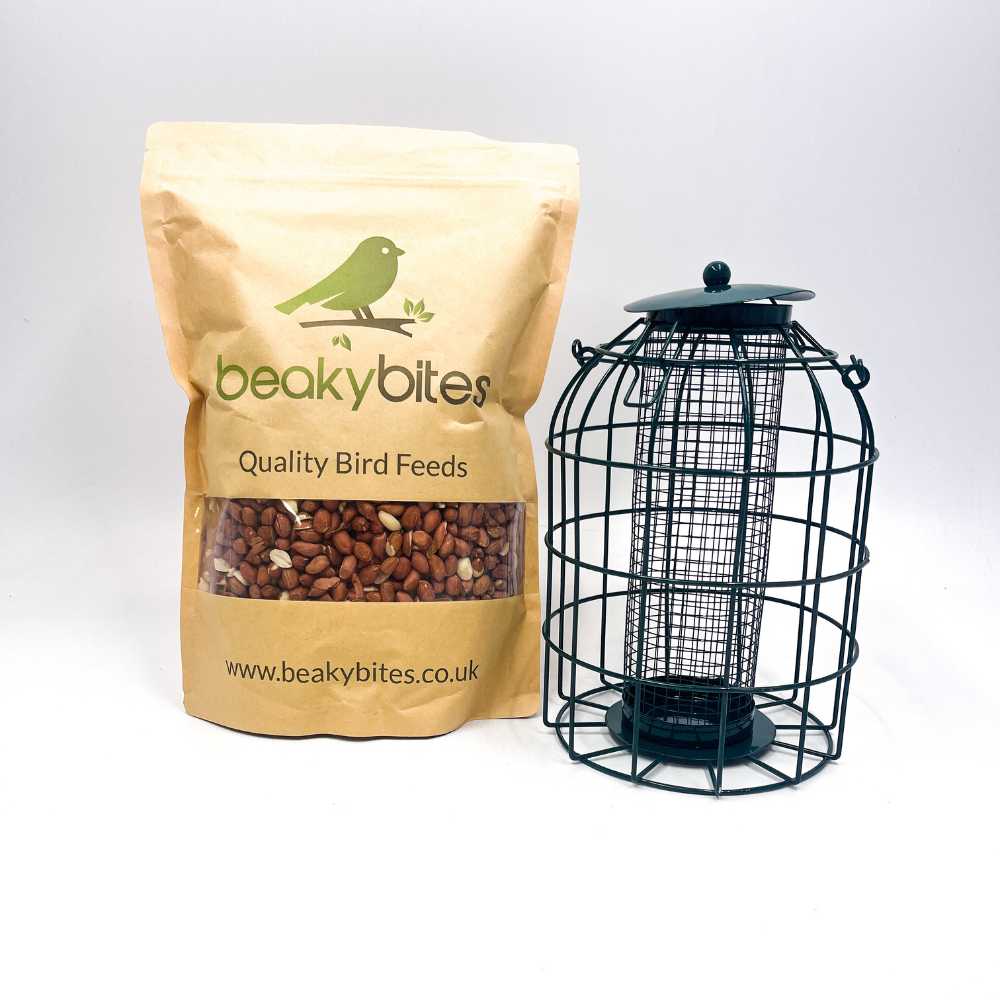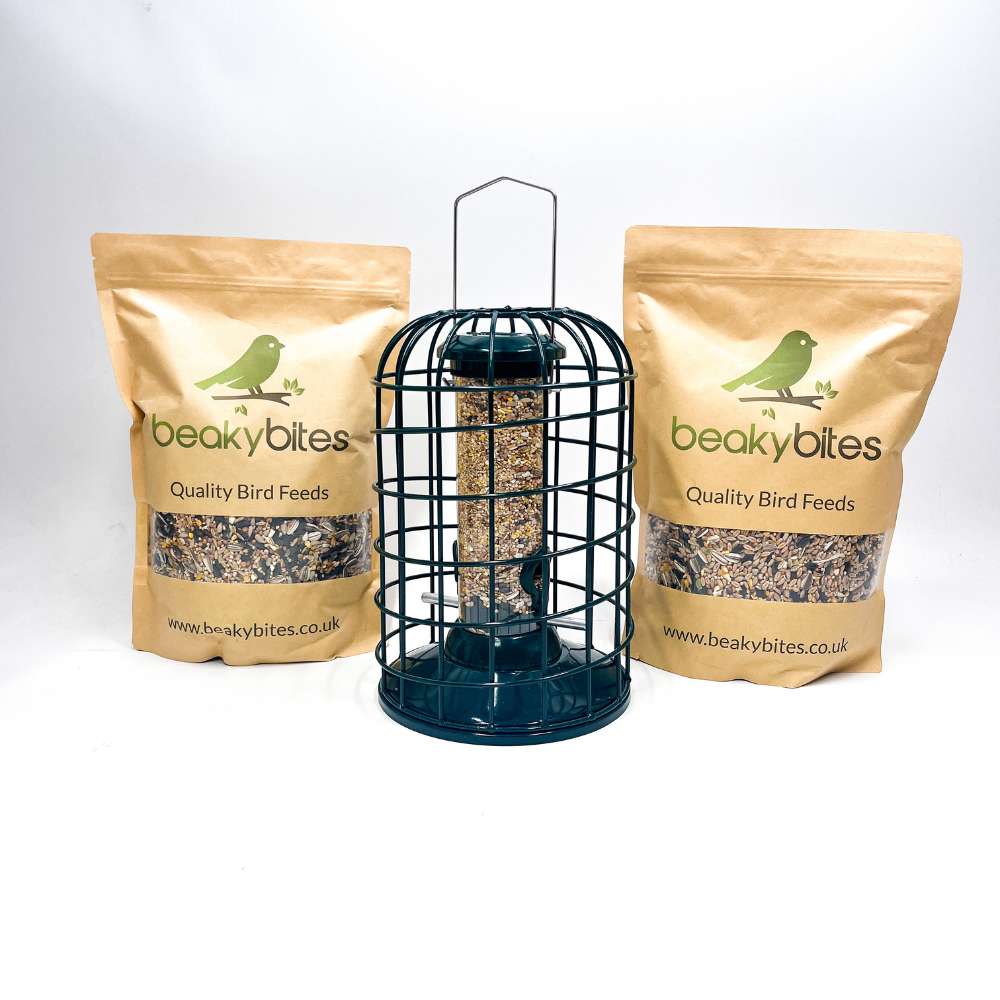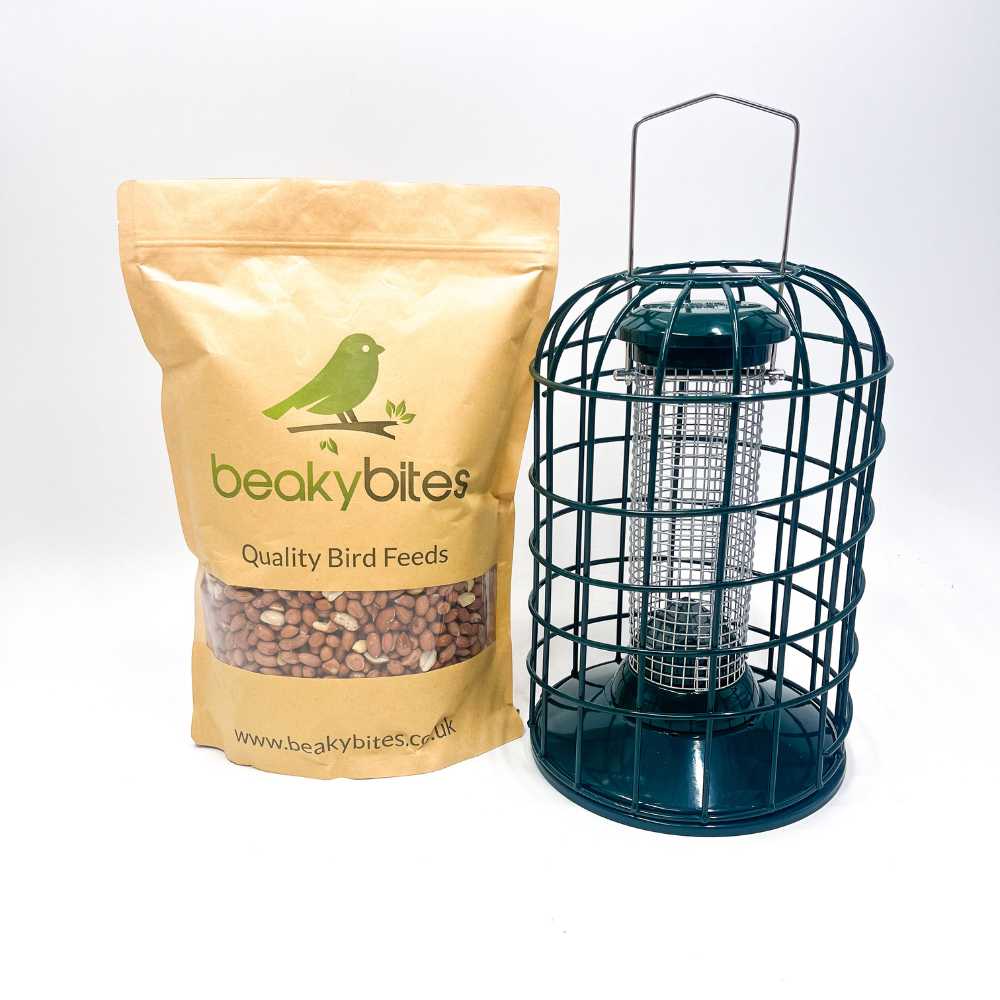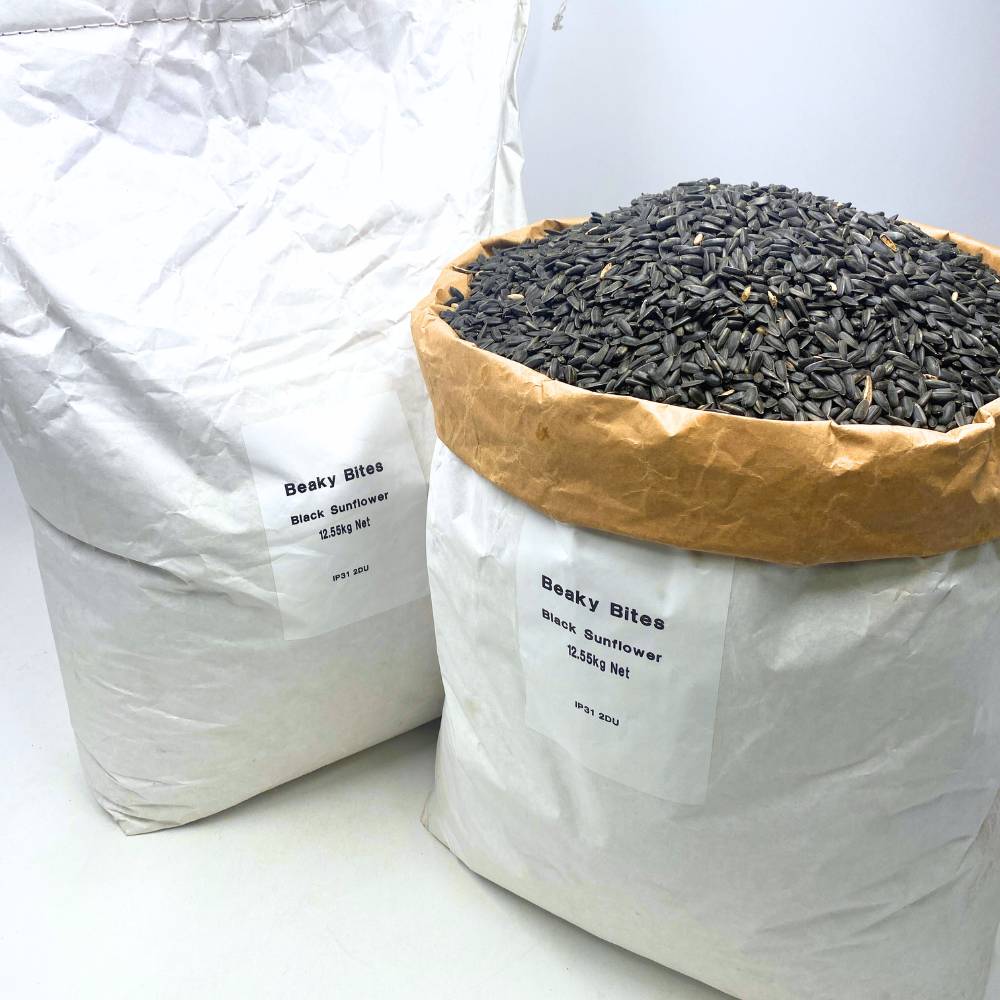Bird Fact File: Collard Dove
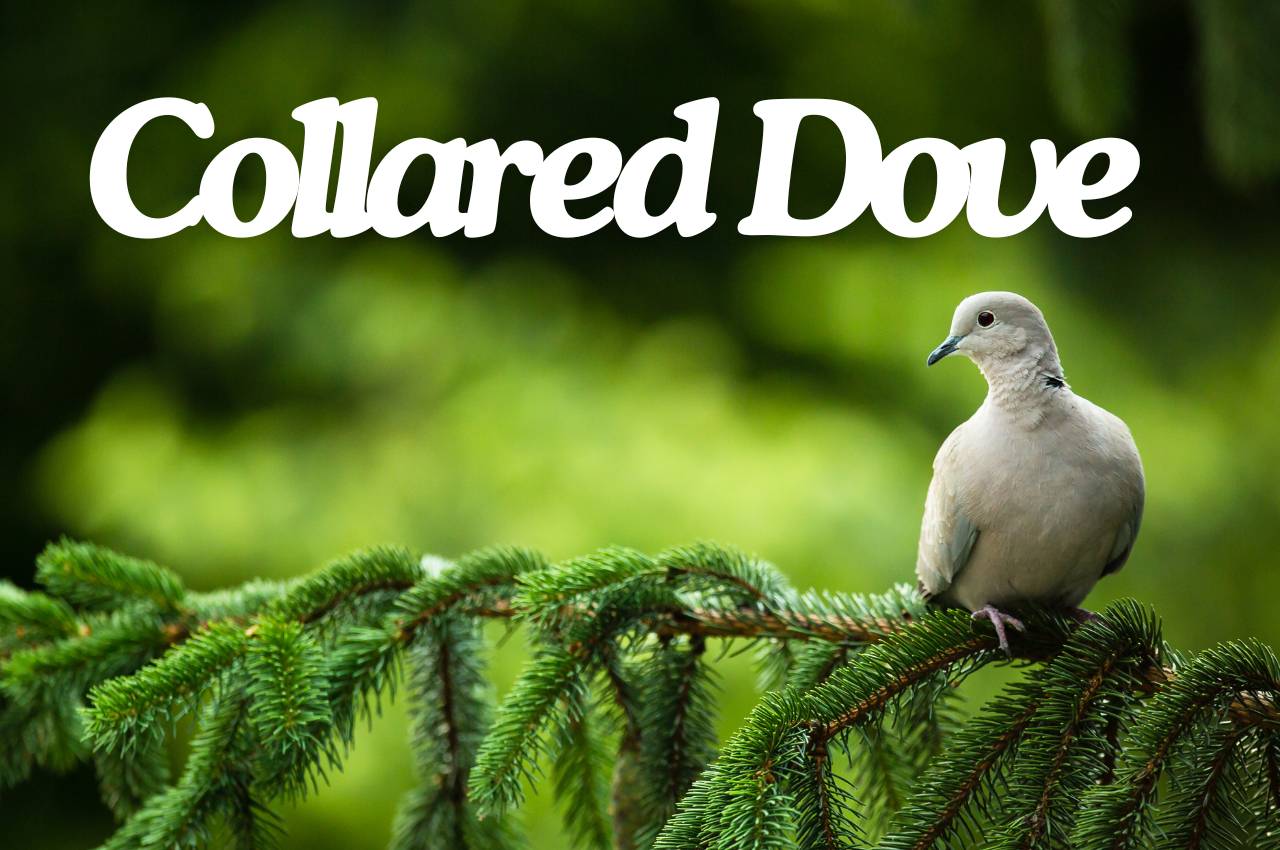
Welcome to our bird guide series brought to you by Beaky Bites! In each post, we'll take a closer look at a beloved UK garden bird to help you better understand and appreciate these amazing birds. From identifying distinct features to discovering their favourite foods and nesting habits, this series aims to provide an overview of our feathered wildlife.
Let's Meet the Collared Dove
Collared Dove Fact File | |
|---|---|
| Size: | 32cm, head to tail |
| Wingspan: | 51cm |
| Weight: | 200g |
| Colours: | Black White, Grey, Pink & Cream |
| Eggs: | 2 eggs per brood, 2-5 broods a year |
| Nesting: | In trees and on top of buildings |
| Population Status: | Stable |
The collared dove is a lovely and unassuming bird, easy to spot with its soft beige-grey plumage, black neck collar and long white edged tail. It’s found in gardens, farmland and urban areas where it eats seeds and grains. With the Latin name Streptopelia decaocto it’s a member of the Columbidae family, which includes pigeons. Although a relatively recent arrival in the UK (first recorded in the 1950s) it’s done well and now has over a million breeding pairs across the country.
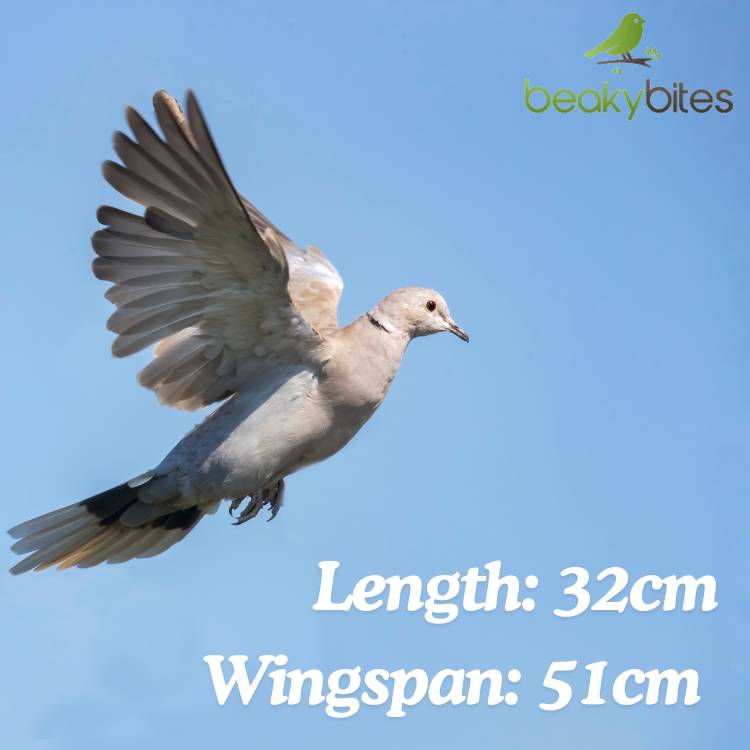
Appearance and Behaviour
Collared doves are lovely birds with soft beige-grey feathers and a black collar around the back of their necks, hence the name. Both males and females have this subtle yet striking look, with dark eyes and slender black beaks. Juveniles are similar but lack the neck collar and their plumage can look a bit dull until they mature.
They’re seed eaters by nature but will eat what’s available. Their diet is grains, seeds and occasional small fruits. In gardens they visit bird tables or ground feeders to eat mixed seed blends or suet pellets. Their strong yet slender beaks are perfect for picking up seeds and cracking smaller ones open.
Unlike other birds, collared doves are more social and are often seen in pairs or small groups. They’re calm and unassuming birds, spending most of their time sat in trees, on fences or on the ground. They can be found in gardens, parks and farmland, particularly near food sources. Their distinctive "coo-COO-coo" call is a familiar sound and is heard throughout the year, adding to the peacefulness of their surroundings. Not as bold as robins but their gentle nature and graceful movement make them a joy to watch.
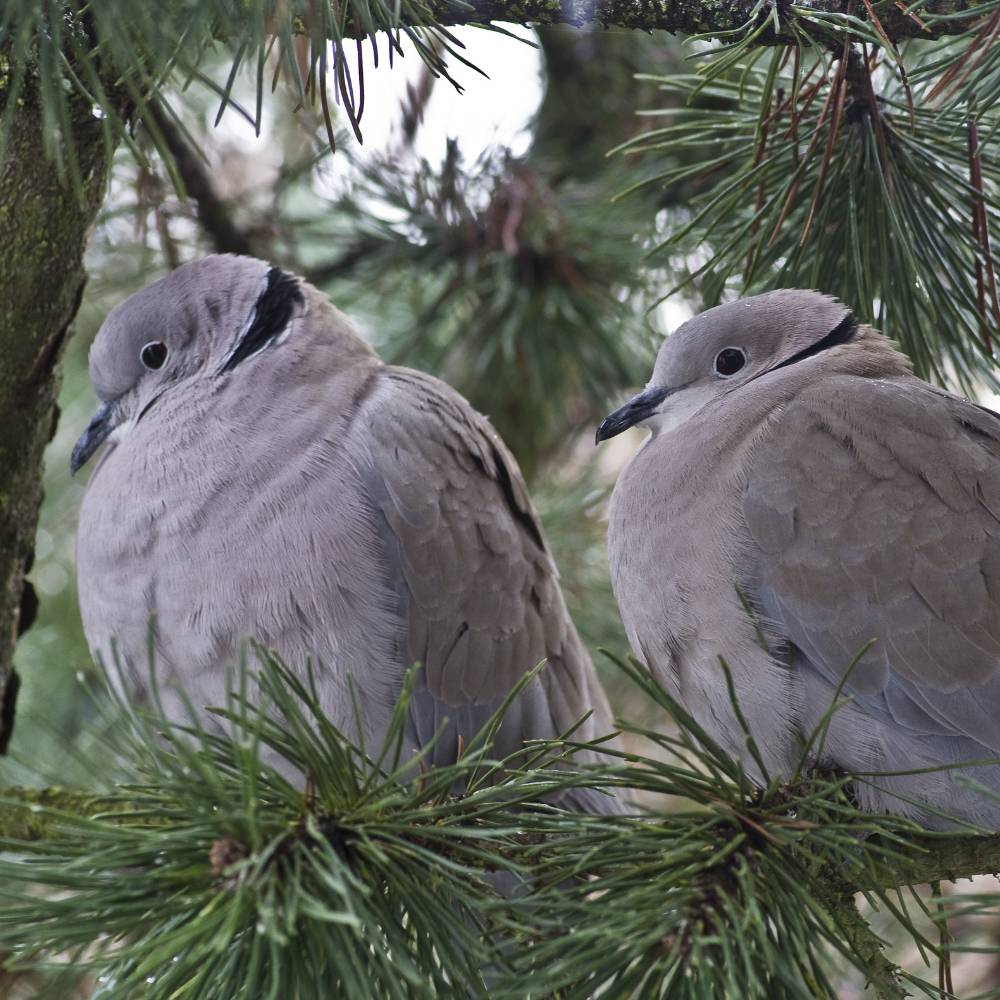
Where do They Hang Out and Eat?
Collared doves are opportunistic feeders so make the most of what’s available to them. In spring and summer they forage for seeds, grains and the odd berry to fuel the breeding season. They can be seen on the ground in pairs or on fences and roofs keeping an eye out for food.
As autumn and winter approaches and natural food sources dwindle collared doves are regular visitors to gardens where they’ll eat mixed seeds, sunflower hearts and suet. These high energy foods are perfect for helping them through the colder months. Their calm and gentle nature means they are often seen at bird tables or ground feeders quietly enjoying a meal.
Collared doves are very adaptable and can live in gardens, parks, farmland and urban areas. They like open spaces to forage and trees or buildings to roost and nest. A garden with a mix of seeds and suet will definitely attract these lovely birds. Their soft cooing and peaceful nature make them a bonus in any wildlife garden.
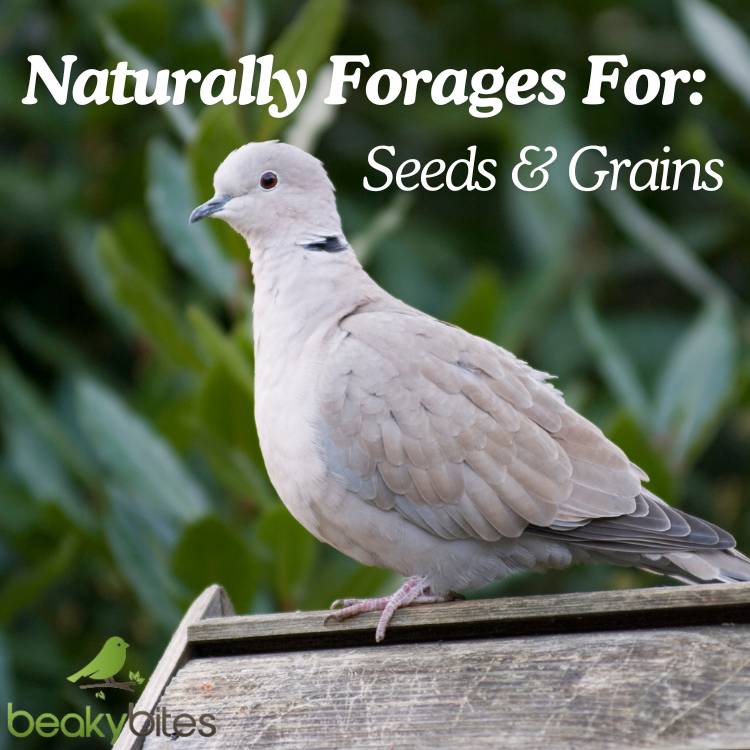
Breeding and Nesting
Collared doves start breeding early in the year and can have multiple broods if conditions are right. They can breed as early as February. A typical clutch is 2 smooth white eggs, the female incubates for 14-16 days. Once hatched both parents feed the young with a special pigeon milk produced in their crops. The squabs stay in the nest for about 15-20 days before they fledge.
During breeding season collared doves can get territorial especially around the nesting site. Their soft cooing call becomes more frequent as males court females and establish their presence. Once paired collared doves form strong bonds and often stay together for life.
The nest is a simple platform of twigs built by both male and female. It’s usually in trees, shrubs or on building ledges high enough to deter predators. Although their nests look flimsy they do the job well, keeping the eggs and chicks safe while they grow and get ready to fly.
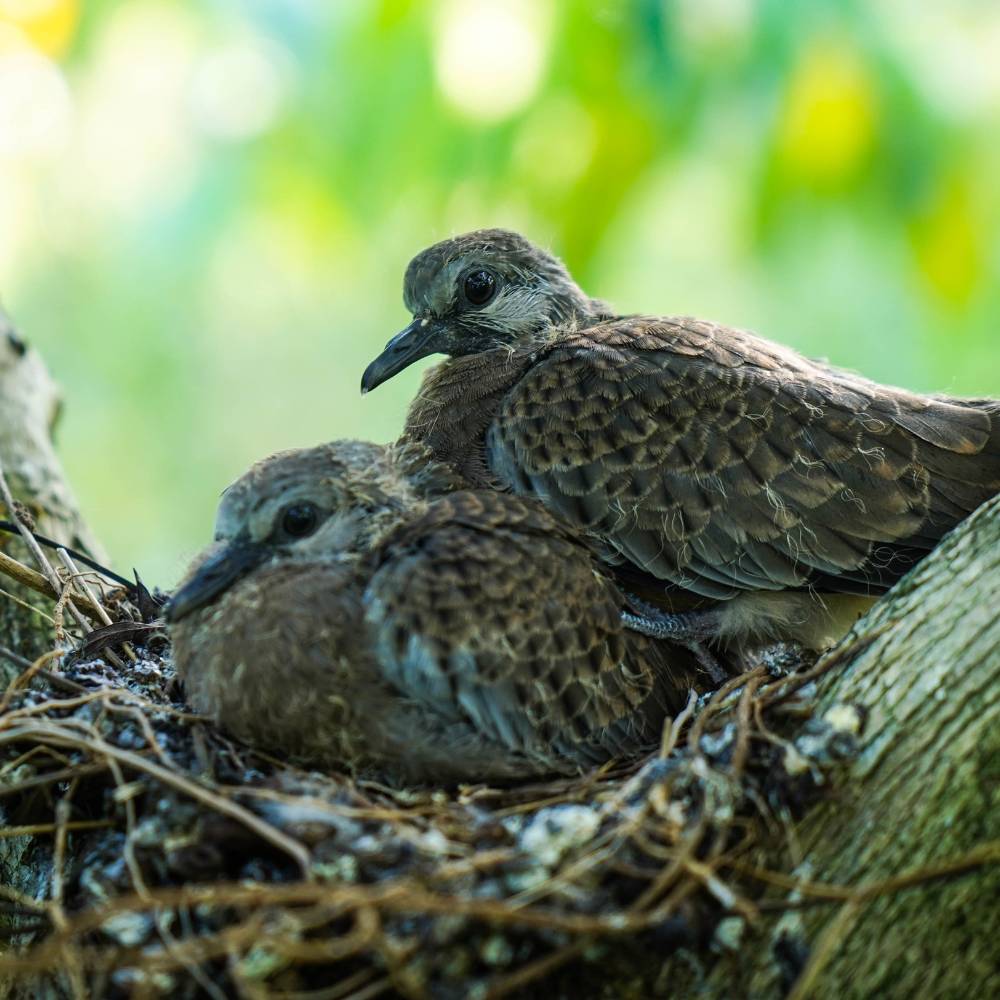
Attracting Them to Your Garden
Collared doves eat seeds and grains so if your garden provides these natural food sources they will visit. You can encourage more to visit by planting native trees and shrubs that produce seeds and fruits all year round. Feeders filled with mixed seeds, sunflower hearts and suet pellets are a favourite of collared doves especially during the colder months when food is scarce.
Suet is a great energy boost for birds in winter and collared doves will happily feed from suet blocks or pellets on a ground feeding tray or bird table. Having a consistent food supply in autumn and winter will keep these birds healthy when natural resources are low. For the best all year round results to support your local collared doves chose an All Season bird seed mix, giving them a natural range of seeds that they would normally forage for.
Having a bird friendly garden with native shrubs, trees and plants that provide food and shelter all year round is a bonus. Collared doves like open spaces for foraging and trees or buildings for roosting and nesting. A simple bird table or platform feeder will also attract these gentle visitors to your garden.
With a garden that has seed producing plants, feeders and quiet spaces for nesting collared doves will love it. They are so calm and serene to watch.
Conclusion
Collared doves like gardens with seeds, grains and suet and trees and shrubs to perch and nest. They prefer open spaces to forage and dense foliage or sheltered spots to roost and raise their young. Add a simple platform feeder or bird table and you’ll soon have these lovely birds visiting, filling your garden with their soft cooing and gentle presence.
Whether you’re a seasoned birdwatcher or just starting out with garden wildlife, having collared doves in your garden is a joy. Next post coming soon!
Frequently Asked Questions
What do collared doves eat, and how can I attract them to my garden?
- Answer: Collared doves eat seeds, grains, and suet; you can attract them with a ground feeder or bird table stocked with these foods.
When is the breeding season for collared doves, and how many broods do they typically have?
- Answer: Collared doves breed from February onwards, often raising up to three broods in a season.
What types of feeders are best for attracting collared doves?
- Answer: Platform feeders or bird tables are ideal for attracting collared doves, as they prefer flat surfaces for feeding.
How do collared doves care for their chicks after hatching?
- Answer: Both parents feed their chicks with nutrient-rich "pigeon milk" until the young are ready to fledge at around 15-20 days.
How can I identify a collared dove, and what makes them unique?
- Answer: Collared doves are easy to identify by their soft beige-grey plumage, distinctive black neck collar, and long white-edged tail.
